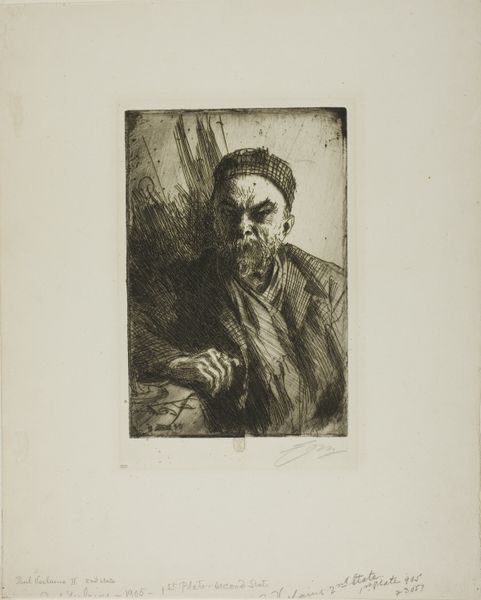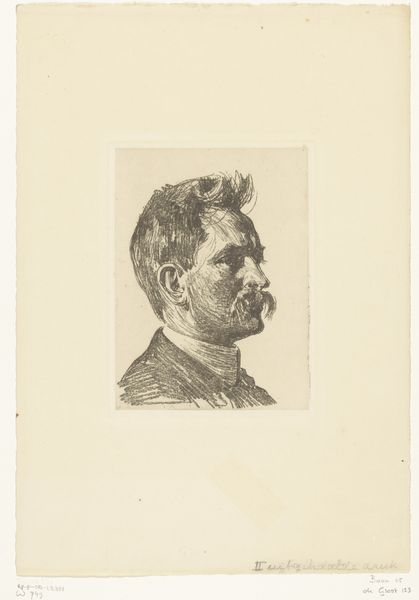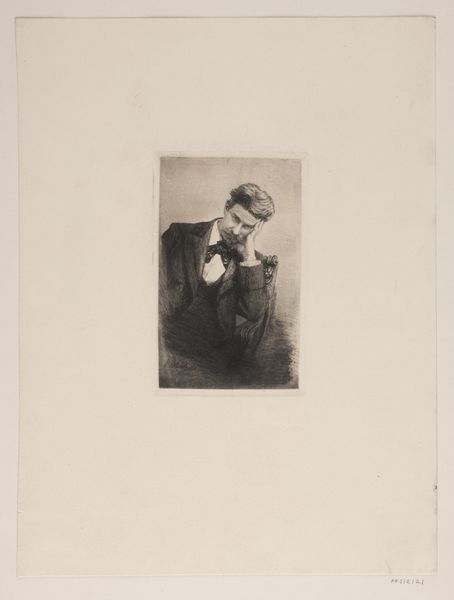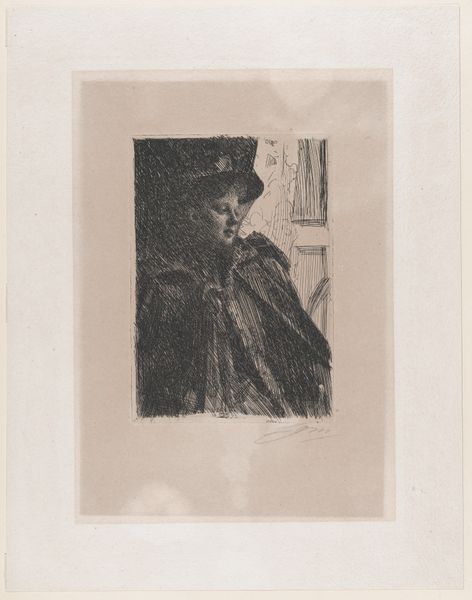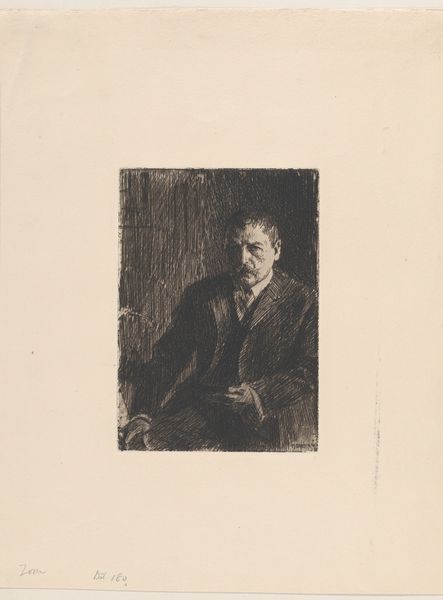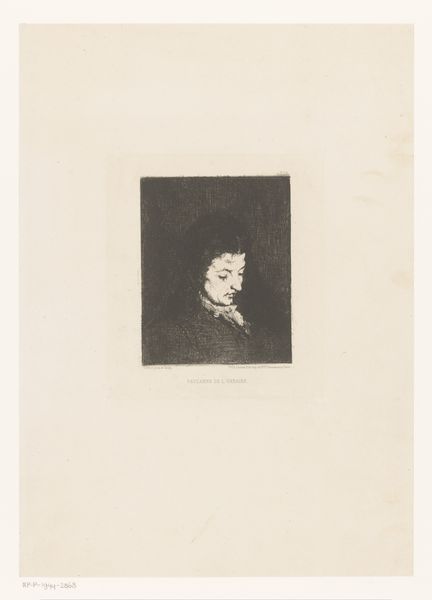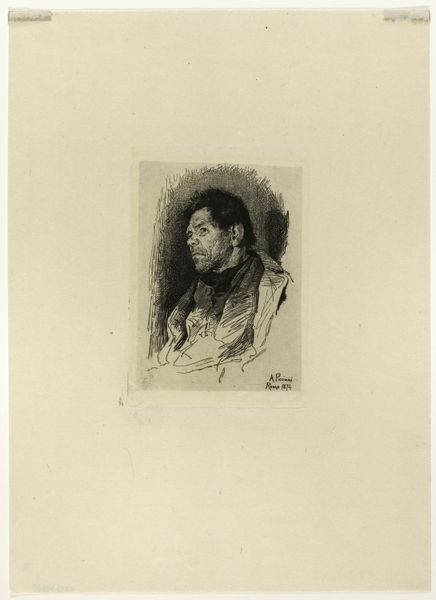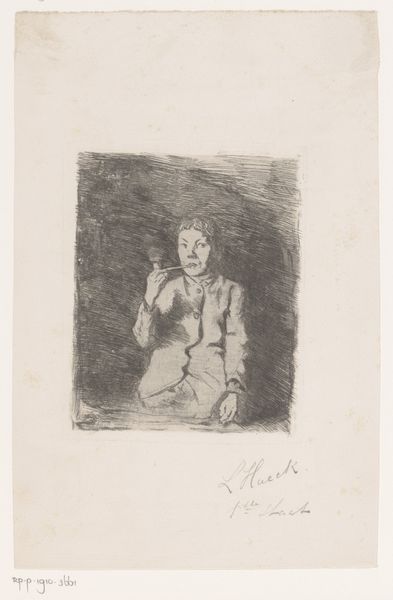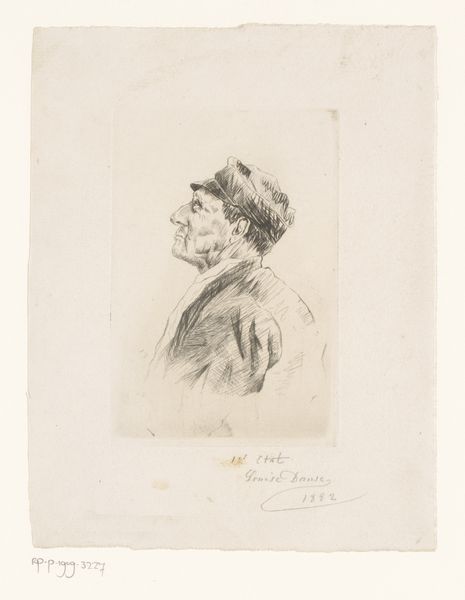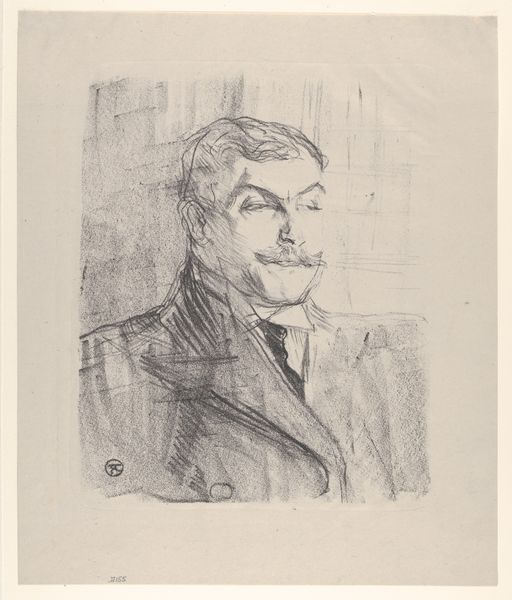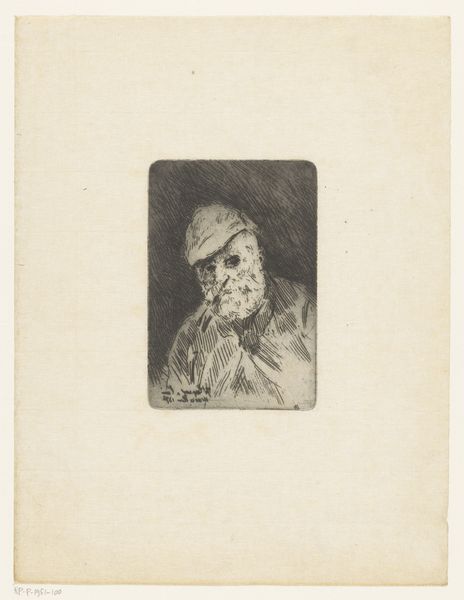
Dimensions: height 249 mm, width 172 mm
Copyright: Rijks Museum: Open Domain
Editor: Here we have Willem Witsen's "Portrait of Hein Boeken," created around 1891. It's an etching, which is interesting, and I find it very moody – quite dark and intense. What stands out to you about it? Curator: Ooh, moody is a great word for it. To me, it feels almost like peering into someone's memory. That hazy, almost dreamlike quality of etching really lends itself to capturing not just a likeness, but a feeling, doesn't it? The lack of sharp detail softens the reality. Ever felt like your own memories get that same hazy treatment? Editor: I get what you mean. It's less a photographic representation and more of an impression. So, it has an impressionistic approach despite the use of realism style? Curator: Precisely! And Witsen's use of light and shadow – those deeply etched areas versus the almost blank space around the face – creates this real drama. Almost a spotlight, wouldn’t you say? Makes you wonder about the character of Hein Boeken, doesn't it? Was he a quiet intellectual, perhaps? Editor: It really does. It’s pulling me in closer to look at that! All that said, given its age and the limited shading, can we be sure that's what the subject truly looks like? Curator: Ah, there's the question of truth! Isn't it delicious to think that art rarely aims for simple duplication, instead being all about interpretation. So in turn, does it show Hein Booken for who he is? Editor: Very well. The more you talk about it, the more intriguing this becomes! Curator: That's the beauty of it, right? It is not what he is, it is who is to us as viewers. Editor: Indeed! Well, I will not think of the Dutch Golden Age with same eyes. Thank you so much for opening my mind to new views on the impressionism style and etching’s potential.
Comments
No comments
Be the first to comment and join the conversation on the ultimate creative platform.

